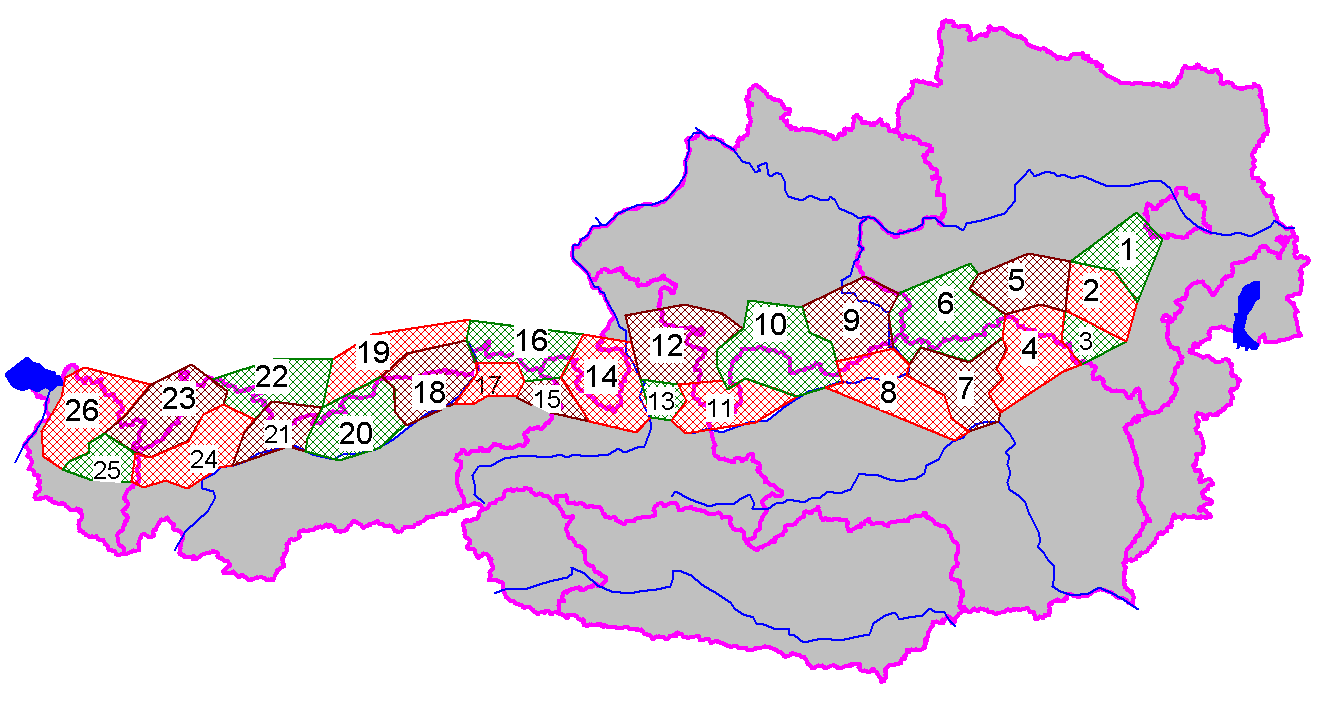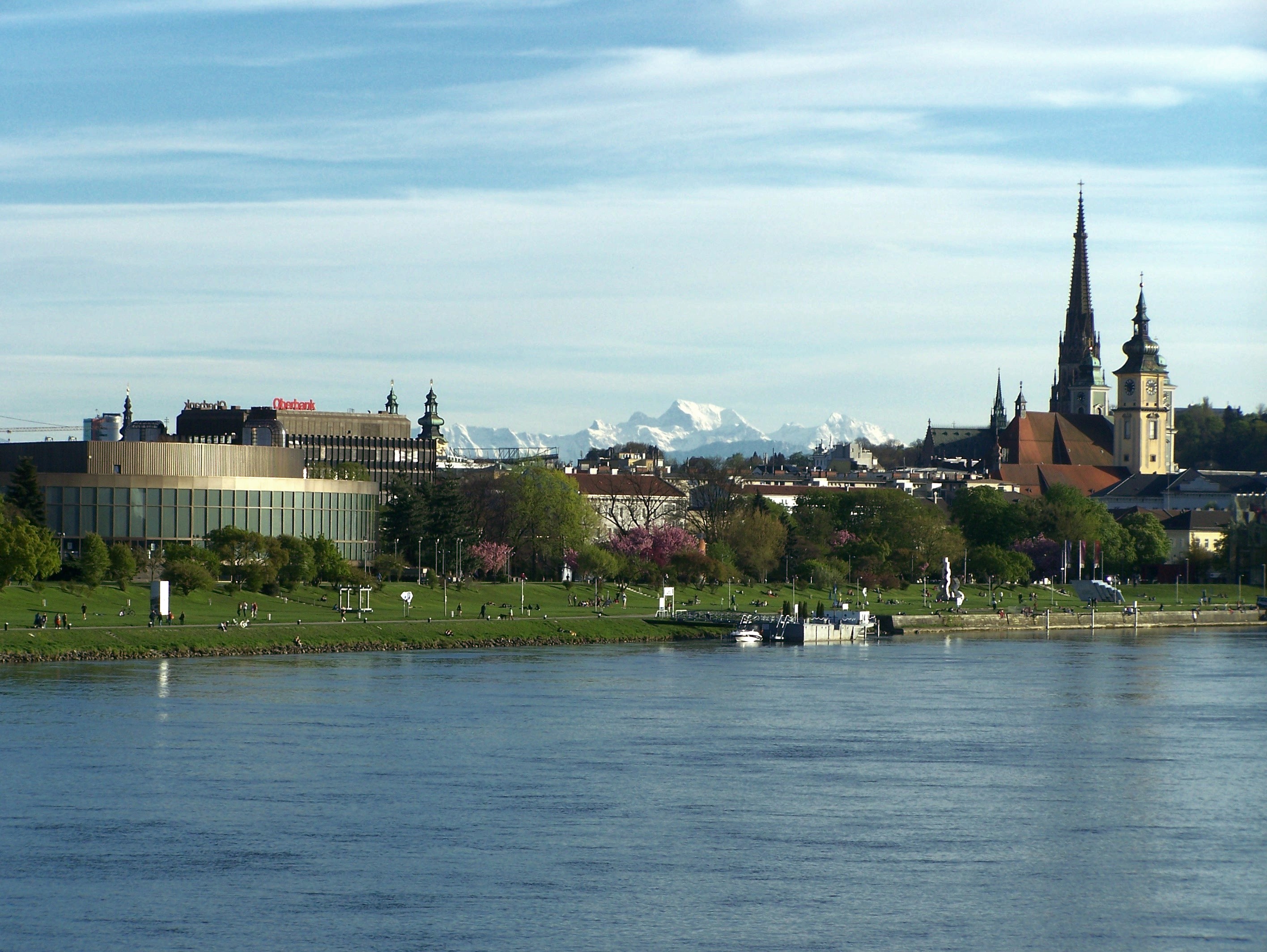|
Totes Gebirge
The Totes Gebirge is a group of mountains in Austria, part of the Northern Limestone Alps, lying between the Salzkammergut and the Ennstaler Alpen. The name ''Totes Gebirge'' is derived from the German words ''tot'' meaning "dead", referring to the apparent lack of vegetation, and ''Gebirge'' meaning "mountain range". The area is a large karst plateau with steep sides, and several mountain peaks above 2000 m. The highest point is the summit of Großer Priel, at . See also * Limestone Alps The Limestone Alps (german: Kalkalpen) are a mountain ranges system of the Alps in Central Europe. They are of economic importance, including as a watershed source of drinking water. They have many accessible dripstone and ice caves. Geography T ... References Mountain ranges of the Alps Northern Limestone Alps Mountain ranges of Styria Upper Austrian Prealps {{UpperAustria-geo-stub ... [...More Info...] [...Related Items...] OR: [Wikipedia] [Google] [Baidu] |
Alpine Club Classification Of The Eastern Alps
The Alpine Club classification of the Eastern Alps (german: Alpenvereinseinteilung der Ostalpen, AVE) is a common division of the Eastern Alps into 75 mountain ranges, based on the Moriggl Classification (ME) first published in 1924 by the German and Austrian Alpine Club. The present-day division established for the German-speaking world (less Switzerland) was compiled by the German, Austrian and South Tyrol Alpine Clubs and published in 1984 and is also used for the basic numbering of Alpine Club maps for mountaineering. Classification system The Eastern Alps are divided into four main areas: the Northern Limestone Alps, the Central Eastern Alps, the Southern Limestone Alps, and the Western Limestone Alps. These four main ranges are further divided into 75 sub-groups. The Northern Limestone and Central Eastern Alps are the largest with 27 groups each, while the Southern Limestone Alps have 15. The six groups of the Western Limestone Alps are also classed with the Central Easter ... [...More Info...] [...Related Items...] OR: [Wikipedia] [Google] [Baidu] |
Austria
Austria, , bar, Östareich officially the Republic of Austria, is a country in the southern part of Central Europe, lying in the Eastern Alps. It is a federation of nine states, one of which is the capital, Vienna, the most populous city and state. A landlocked country, Austria is bordered by Germany to the northwest, the Czech Republic to the north, Slovakia to the northeast, Hungary to the east, Slovenia and Italy to the south, and Switzerland and Liechtenstein to the west. The country occupies an area of and has a population of 9 million. Austria emerged from the remnants of the Eastern and Hungarian March at the end of the first millennium. Originally a margraviate of Bavaria, it developed into a duchy of the Holy Roman Empire in 1156 and was later made an archduchy in 1453. In the 16th century, Vienna began serving as the empire's administrative capital and Austria thus became the heartland of the Habsburg monarchy. After the dissolution of the H ... [...More Info...] [...Related Items...] OR: [Wikipedia] [Google] [Baidu] |
Northern Limestone Alps
The Northern Limestone Alps (german: Nördliche Kalkalpen), also called the Northern Calcareous Alps, are the ranges of the Eastern Alps north of the Central Eastern Alps located in Austria and the adjacent Bavarian lands of southeastern Germany. The distinction from the latter group, where the higher peaks are located, is based on differences in geological composition. Geography If viewed on a west–east axis, the Northern Limestone Alps extend from the Rhine valley and the Bregenz Forest in Vorarlberg, Austria in the west extending along the border between the German federal-state of Bavaria and Austrian Tyrol, through Salzburg, Upper Austria, Styria and Lower Austria and finally ending at the Wienerwald at the city-limits of Vienna in the east. The highest peaks in the Northern Limestone Alps are the Parseierspitze () in the Lechtal Alps,Reynolds, Kev (2010). ''Walking in the Alps'', Cicerone, . and the Hoher Dachstein (). Other notable peaks in this range include the Zugs ... [...More Info...] [...Related Items...] OR: [Wikipedia] [Google] [Baidu] |
Salzkammergut
The Salzkammergut (; ; bar, Soizkaumaguad, label=Central Austro-Bavarian) is a resort area in Austria, stretching from the city of Salzburg eastwards along the Alpine Foreland and the Northern Limestone Alps to the peaks of the Dachstein Mountains. The main river of the region is the Traun, a right tributary of the Danube. The name translates to "salt demesne" (or "salt domain"), being a German word for territories held by princes of the Holy Roman Empire, in early modern Austria specifically territories of the Habsburg monarchy. The salt mines of Salzkammergut were administered by the Imperial in Gmunden from 1745 to 1850. Parts of the region were designated a UNESCO World Heritage Site in 1997. Geography The lands on the shore of the Traun River comprise numerous glacial lakes and raised bogs, the Salzkammergut Mountains and the adjacent Dachstein Mountains, the Totes Gebirge and the Upper Austrian Prealps with prominent Mt. Traunstein in the east. The towering mountain ... [...More Info...] [...Related Items...] OR: [Wikipedia] [Google] [Baidu] |
Ennstaler Alpen
, photo=HochtorOedsteinGroup FromS HoherZinken.jpg , photo_caption=Hochtor - Ödstein Group (Gesäuse) (from right to left) as seen from Hoher Zinken in the south , country= Austria , subdivision1_type=States , subdivision1= , parent= Northern Limestone Alps , length_mi= , length_orientation= , width_mi= , width_orientation= , geology= , orogeny= , highest=Hochtor , elevation_m=2369 , coordinates= , range_coordinates= , map_image=Alps location map (Ennstaler Alpen, AVE).png , map_caption=Ennstal Alps (in red) within the Alps.The borders of the range according to Alpine Club classification of the Eastern Alps The Ennstal Alps (German ''Ennstaler Alpen''), the Alps of the Enns valley, are a mountain range of the Northern Limestone Alps System. They are located primarily in the Austrian state of Styria, and also into the state of Upper Austria. The most famous scenery in the Ennstal Alps is the Gesäuse, a valley where the Enns river cuts through the limesto ... [...More Info...] [...Related Items...] OR: [Wikipedia] [Google] [Baidu] |
German Language
German ( ) is a West Germanic languages, West Germanic language mainly spoken in Central Europe. It is the most widely spoken and Official language, official or co-official language in Germany, Austria, Switzerland, Liechtenstein, and the Italy, Italian province of South Tyrol. It is also a co-official language of Luxembourg and German-speaking Community of Belgium, Belgium, as well as a national language in Namibia. Outside Germany, it is also spoken by German communities in France (Bas-Rhin), Czech Republic (North Bohemia), Poland (Upper Silesia), Slovakia (Bratislava Region), and Hungary (Sopron). German is most similar to other languages within the West Germanic language branch, including Afrikaans, Dutch language, Dutch, English language, English, the Frisian languages, Low German, Luxembourgish, Scots language, Scots, and Yiddish. It also contains close similarities in vocabulary to some languages in the North Germanic languages, North Germanic group, such as Danish lan ... [...More Info...] [...Related Items...] OR: [Wikipedia] [Google] [Baidu] |
Karst
Karst is a topography formed from the dissolution of soluble rocks such as limestone, dolomite, and gypsum. It is characterized by underground drainage systems with sinkholes and caves. It has also been documented for more weathering-resistant rocks, such as quartzite, given the right conditions. Subterranean drainage may limit surface water, with few to no rivers or lakes. However, in regions where the dissolved bedrock is covered (perhaps by debris) or confined by one or more superimposed non-soluble rock strata, distinctive karst features may occur only at subsurface levels and can be totally missing above ground. The study of ''paleokarst'' (buried karst in the stratigraphic column) is important in petroleum geology because as much as 50% of the world's hydrocarbon reserves are hosted in carbonate rock, and much of this is found in porous karst systems. Etymology The English word ''karst'' was borrowed from German in the late 19th century, which entered German much earlier ... [...More Info...] [...Related Items...] OR: [Wikipedia] [Google] [Baidu] |
Großer Priel
The Großer Priel () is, at 2,515 metres above the Adriatic (8,251 ft), the highest mountain of the Totes Gebirge range, located in the Traunviertel region of Upper Austria."Großer Priel, Austria" Peakbagger.com. Retrieved 2012-11-01. It ranks among the ultra prominent peaks of the Alps. Part of the , its steep cliffs form the northeastern rim of a large [...More Info...] [...Related Items...] OR: [Wikipedia] [Google] [Baidu] |
Limestone Alps
The Limestone Alps (german: Kalkalpen) are a mountain ranges system of the Alps in Central Europe. They are of economic importance, including as a watershed source of drinking water. They have many accessible dripstone and ice caves. Geography They are roughly long. The two main groups, Northern and Southern, run parallel to the main Austrian Central Alps (also known as the Central Eastern Alps) mountain ranges, on their north and south. Together with the Austrian Central Alps, the Limestone Alps form the most westerly portion of the Eastern Alps. The mountain and hill profiles of the Limestone Alps are very varied and range from jagged peaks and sheer rock faces to high plateaus and extensive areas of karst formations. Groups The numerous ranges of the Limestone Alps are within three mountain groupings, the Northern Limestone Alps, Southern Limestone Alps, and Western Limestone Alps: *The Northern Limestone Alps are in Austria and Bavaria, Germany. Its ranges include: the Al ... [...More Info...] [...Related Items...] OR: [Wikipedia] [Google] [Baidu] |
Totes Gebirge
The Totes Gebirge is a group of mountains in Austria, part of the Northern Limestone Alps, lying between the Salzkammergut and the Ennstaler Alpen. The name ''Totes Gebirge'' is derived from the German words ''tot'' meaning "dead", referring to the apparent lack of vegetation, and ''Gebirge'' meaning "mountain range". The area is a large karst plateau with steep sides, and several mountain peaks above 2000 m. The highest point is the summit of Großer Priel, at . See also * Limestone Alps The Limestone Alps (german: Kalkalpen) are a mountain ranges system of the Alps in Central Europe. They are of economic importance, including as a watershed source of drinking water. They have many accessible dripstone and ice caves. Geography T ... References Mountain ranges of the Alps Northern Limestone Alps Mountain ranges of Styria Upper Austrian Prealps {{UpperAustria-geo-stub ... [...More Info...] [...Related Items...] OR: [Wikipedia] [Google] [Baidu] |
Mountain Ranges Of The Alps
A mountain is an elevated portion of the Earth's crust, generally with steep sides that show significant exposed bedrock. Although definitions vary, a mountain may differ from a plateau in having a limited summit area, and is usually higher than a hill, typically rising at least 300 metres (1,000 feet) above the surrounding land. A few mountains are isolated summits, but most occur in mountain ranges. Mountains are formed through tectonic forces, erosion, or volcanism, which act on time scales of up to tens of millions of years. Once mountain building ceases, mountains are slowly leveled through the action of weathering, through slumping and other forms of mass wasting, as well as through erosion by rivers and glaciers. High elevations on mountains produce colder climates than at sea level at similar latitude. These colder climates strongly affect the ecosystems of mountains: different elevations have different plants and animals. Because of the less hospitable terrain and ... [...More Info...] [...Related Items...] OR: [Wikipedia] [Google] [Baidu] |





.jpg)

